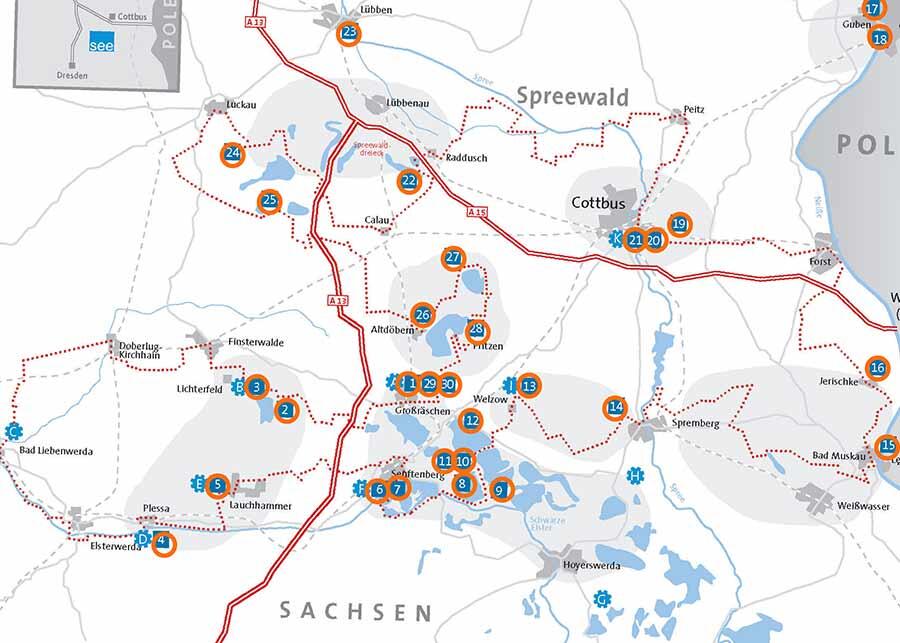
Instructor:
Course: Reconceptualizing the Urban: Berlin as Laboratory
Students: Xiaodi Yan
Lusatia is one of the largest mining areas in Germany and used to be the energy center of the former GDR, which was dismissed after the German reunification in 1990. Mining areas are supposed to be recultivated and generate new source of income. From the planning of Otto Rindt – “father of the Senftenberg lake region” to the program of Internationale Bauausstellung (IBA) Fürst-Pückler-Land, the purpose of post-industrial landscape reclamation has changed from simply aiming at returning sites back to “natural” landscape, to creating “a diverse, multifunctional post-mining landscape as a condition for new economic activities and future perspectives for people and enterprises in the region “(IBA). How did mining change the land use in Lusatia? How did the recultivation planning and future vision of different mining sites change in the past decades? Does it become more and more diverse? How did the different institutions and organizations, like IBA, LMBA. and Federal Government and Federal State, cooperate together to generate and realize new ideas for recultivation? The purpose of the research is to map the change of land use influenced by mining industry and to trace the evolution of recultivation planning ideas and projects.
The history of Lusatia area could be divided into four periods according to the key moments when important social and political events influential to the industrial development and redevelopment process happened. For each period, map at a moment during this period would be examined. Besides that, each of the periods will be discussed from two aspects: mining landscape and post-mining landscape. The first part is to illustrate how the rise and decline of mining industry have an effect on regional land use and landscape under the given social and political conditions. The second part is to document the visions, ideas and measures of post-mining re-cultivation during different periods to see its continuity and difference.








